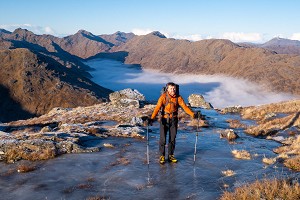
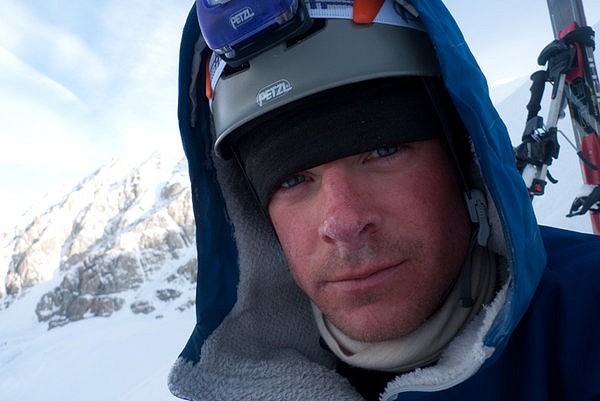
The Speed Ascent is essentially an Ascensionist Jacket with an R2 fleece liner - for those of us who aren't obsessed with Patagonia kit what this means is a winter warm fleece with a durable and stretchy softshell outer. The idea is to create a warm but highly breathable layer for energetic winter climbing. At first I thought it would be ideal for fast winter alpine days as it would provide you with a fleece layer that is essentially weather proof. When I tried it on though, I realised that it would probably be too warm. It is, however, ideal for colder climates than we tend to get in the European Alps. If you find yourself heading for the greater ranges or ice climbing in cold temperatures then it will come into it's own.
"We climbed non-stop on often deep 50 degree snow and 2 hours later as we approached the summit ridge I still had it fully zipped up..." |
The technical side of the jacket is nice and simple. In a nutshell Patagonia has welded an R2 fleece hoody into their top of the line softshell. Softshell fabric has come a long way in recent years and the Speed Ascent is no exception. It is incredibly tough and durable and waterproof. This combined with the fleece liner also renders it pretty much 100% windproof. The hood is also fleece lined, adding extra warmth and - like hoods on all Patagonia Jackets I've worn - it fits perfectly over your helmet.
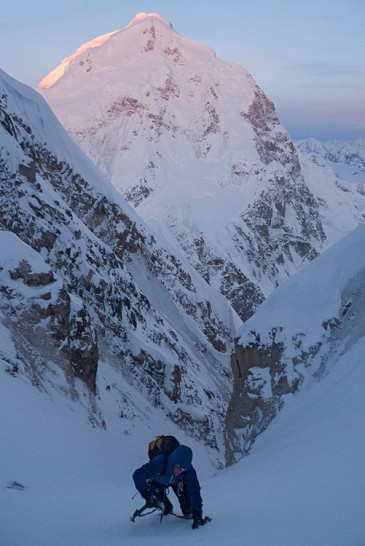
The jacket's no faff design is great. There aren't lots of toggles and zips to contend with - it just fits. As you'd expect from a top of the line jacket, all the seams are welded and all the pocket zips are pretty much waterproof. The fleece is securely attached too, which means that it won't bunch up or create annoying pockets between it and the outer layer - it is essentially just one layer that acts like two. So the design and construction is perfect - but then there is no surprise there.
The question for this kind of jacket really is what would you use it for? Well, for me I found that it was too warm for European Alpine Winter. I guess if I was a harder climber and spent four days moving up something at a snail pace then I might think differently, but for fast moving terrain I prefer to have a layering system. The problem with the Speed Ascent of course is that you don't have an option of climbing without a fleece layer when you are booking it up some easy ice fields. However, for ski days it was really nice - just worn with a thermal base layer it kept me warm but was also highly breathable when I was picking myself up out of bottomless powder for the tenth time that day.
I didn't get to use the Speed Ascent too much for climbing this winter in the Alps for reasons already mentioned. I tried using it on ice cragging days but again I found that I preferred a layering system as it was a bit too warm when I was bricking myself on lead and pushing my grade. However, if I were to find myself ice cragging in colder temperatures such as you'd find in Canada or Norway I think the Speed Ascent would be perfect. At the end of the day it doesn't really get too cold in Chamonix when it comes to ice cragging. I do think though that the worst thing for killing winter ice psyche is cold belays half way up a route and the Speed Ascent would keep you nice and toasty when the temps dropped.
As for Alpine stuff, I ended up taking the jacket to Alaska under recommendation from Matt Helliker. He was harping on to me about how perfect the Speed Jacket was for Alaskan climbing so I packed it in the bag along with my trusty Ascensionist just in case. This year Alaska was a bit of a wash out - the weather at the start of the season was truly terrible so we spent a lot of time just digging the tent out. But by the end of our stay and a quick jump to Kahiltna things started to clear up. The temperatures by then were starting to get pretty warm but we decided to head up the West face of Kahiltna Queen for some sunrise shots on the summit ridge.
Jon heading up the Kahiltna Queen in the Speed Ascent jacket
We left at midnight and spent the next three hours breaking trail to the face in deep snow and gale gusting winds. The snow was a pain but I felt bomb proof in my Speed Ascent Jacket. I zipped it up, pulled the hood toggles tight and then got lost in my own world of breaking trail in the dark with snow flying sideways across my head torch beam. Will was having a hard time behind trying to sort out his clothing system but in the biting wind the Speed Ascent performed without any problems. Once on the route we simul soloed up; whilst I was worried that the Speed Ascent would be too hot it was actually just right. We climbed non-stop on pretty good but often deep 50 degree snow and 2 hours later as we approached the summit ridge I still had it fully zipped up.
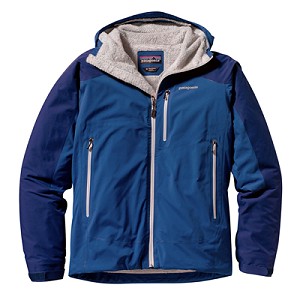
Patagonia Speed Ascent Jacket
- Fabric: Wind and water-resistant lightweight, 100% recycled polyester stretch double weave with reinforced shoulders, elbows and forearms.
- Construction: Stitch-free, lap-glued seams speed dry time, improve water resistance and decrease bulk.
- Lining: Low-bulk R2® lining (40% recycled) welded to the interior.
- Hood: Helmet-compatible, 3-way-adjustable hood.
- Zip: DWR (durable water repellent).
- Pockets: Two large handwarmers fit skins; one left chest; zippers with DWR finish and garages.
- Articulation: Articulated arms; cuffs secure with supple, die-cut tabs; elastic drawcord hem
- Shell: 4-oz 100% polyester double weave. Reinforcements: 5.3-oz 100% polyester (45% recycled) double weave.
- Insulation: R2® 7.4-oz Polartec® Thermal Pro® polyester (40% recycled).
- Weight: 794g.
- Colours: Feather Grey, Continental Blue, Black.
- Made in: China.
I hadn't really given it enough credit for how breathable it would be and it wasn't until this climb that I realised it. Previously I had thought that it would be far too warm for most activities but I was pleasantly surprised how it had performed - the last 5 hours had been at training pace and at no point did I feel like I needed to take it off due to the heat.
Summary
The stretch afforded by the jacket is great - it doesn't restrict you as you might think a thicker outer layer would. As mentioned earlier the fit is awesome as well. It's a European rather than a US cut - the kit Patagonia sell in the EU is tailored for slimmer rather than bulky climbers.
All in all a pretty cool jacket but not one that will suit everyone's taste. If you do find yourself climbing a lot of, say, summer Alpine then this is definitely going to be way too hot but if your thing is very cold temperatures (skiing or climbing) then it's ideal.
PRICE: £280
STOCKISTS: A list of UK stockists is here.
About Jon Griffith

Jon Griffith's first climbing days were in the Avon Gorge at Bristol. After university he moved to Chamonix, where he works as a professional mountain photographer: www.alpineexposures.com.
"It's hard to pick one specific type of climbing that I prefer over the others but I think my heart still lies with big mixed alpine routes that potentially involve a couple of nights bivying. I am still getting used to the whole Chamonix 'get back in time for the last lift' style - I still include bivying as a part of any decent mountaineering experience. I am also still getting used to crack climbing - it hurts.... a lot."

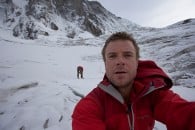

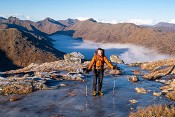

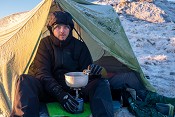
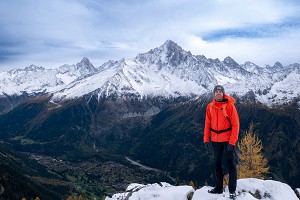
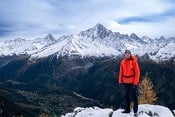
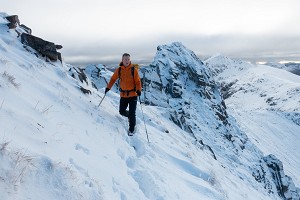
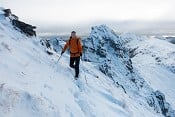
Comments